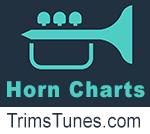Finally speaking with Lou Marini by phone was a treat after playing a few rounds of phone tag. Each call was answered by his voice message that showcased a somber alto flute version of Spring Can Really Hang You Up the Most. Utimately his busy schedule allowed this interviewer a half hour conversation with Blue Lou. He was at home between tours in Spain and Italy, packing for yet another trip. Marini’s focus during conversation was captivating. He spoke in great detail, wandering off and on topic, all the while never losing focus of the story at hand. A longer conversation certainly would have unearthed more about this fascinating man. This time the concentration was on current projects and of course – the saxophone.
Lou, thank you much for taking the time to speak with me for SaxShed.com. I know you are home for just a few days. You must be heading out again soon.
That’s right. I’m in the middle of packing. We’re leaving tomorrow for Spain and Italy again.
Tell me what you will be doing in Europe.
Last December I produced a record for an Italian band. They did 16 traditional Italian songs in sort of a Blues Brothers R&B style. They were just like tarantellas and polkas. I used my colleagues from the Blues Brothers rhythm section and the New York Horns. I came up with the concepts for the tunes and we split up the arranging. It came out really great. We went over and played three concerts in Italy. In fact, we played one concert at a prison over there. It was almost like the Blues Brothers movie. It was a trip.
My wife who is Spanish and I were heading for Madrid. I had called some friends of mine and said that I would be there with my horns. They have a well-known blues band named Red House. We played two nights at the number one jazz club in Madrid. There were lines outside the club and they were turning people away. As a result they invited me back for a week in June. We then came back to head to Japan for two weeks with the Blues Brothers Band.
Now I’m heading back again to play again with Red House and this other blues band in Italy and Spain. We’ll have a few days to relax as well.
What comes next after returning from Italy and Spain?
When we return, I’ll head to Tanglewood a week of Artist in Residence with James Taylor. We have three concerts up there. Once is just the band called Conversation Among Friends. The next two are with Yoyo Ma and Cheryl Crow and us. The final concert is with James Taylor, John Williams and the Boston Pops.
Despite the traveling you do, you do spend a fair amount of time in New York. You are a longtime resident of The Upper West Side. Have you been living there since you left North Texas State (University of North Texas)?
I stayed in Texas for a few years after because I was married and subsequently divorced. I have a son and daughter there. I came to New York in 1971. When I decided to move I had been working with Doc Severensen when he would book big band gigs down in Texas. I would play the jazz tenor chair. He found out I was moving to New York and hired me to replace a friend of mine. The first gig I played in Kansas was with Doc and Lou Tabackin. Lou said he had just married Toshiko (Oshi) and asked if I wanted to sublet his apartment. So I had a gig and a pad. It felt like I was supposed to be here (NYC).
You didn’t have to get things together and starve for a while upon arrival in NYC. You had everything set up for you. That’s a great way to get started.
Yeah, I was playing with Doc and then three months later I quit Doc and joined Blood, Sweat and Tears.
You came after Fred Lipsius, the original sax player for Blood, Sweat and Tears?
Yeah, I took Fred’s place. Actually I took Joe Henderson’s place but I don’t think he ever did a gig. Joe did rehearsals and I think that he left the band right before they were heading on a tour to Europe. That’s when I auditioned and got the gig.
Joe Henderson, THE Joe Henderson was with Blood, Sweat and Tears. I didn’t know that. How long did you play with Blood, Sweat and Tears?
Yes, it was THAT Joe Henderson. I was there for not quite two years.
Fred and I recently became friendly after meeting at Emilio’s shop at Rayburn in Boston. We’ve bumped into each other since then and kept in touch.
Yeah, Fred’s a lovely cat. I know Emilio too. In fact, two times I hosted Emilio at my pad to repair horns. This was through George Young and Lou DelGatto who knew Emilio. It was a *$%##@ circus! At one point I counted 16 guys in my pad. I have a big apartment so there were guys in my music room, guys in my living room, dining room, and bedroom. Chris Potter, Brecker, Pharaoh Sanders, George Coleman…It was a trip!
I do recall reading something published about that. It was probably 15 years ago.
Tell me about your perception of how you and the business have changed for you over the past couple of decades. Surely things have changed since you started.
I guess I’ve changed with the business. It used to be that going out on tour was cake and the bread and butter was working in the recording studios. When the recording ended due to computers, synthesizers and all that stuff I developed different connections traveling and playing concerts. Now almost all that I do is live playing. I still record often for Sesame Street and every year I play the Kennedy Center Honors Show in D.C. I also play the Tony Awards each year in New York if I’m around. Lately I’ve been playing in a wonderful band with Linda Carter who you may remember as Wonder Woman. She’s a terrific lady and a really good singer. She has great charts and a super good band. It’s not that often but it’s a little delight out of town when it happens. I also play with Lou Soloff with Steve Tyrell. I went to Israel back in April and they have invited me back in October. I played in Paris and will be headed back to Monaco. I played on Dave Sanborn’s album and played a week at the Blue Note with him. As far as any period standing out, no.
Right now I’m going to release an album of my music that was done 10 years ago and never released. I’ve also been working on Highly Classified a different, edgy, funky project with a friend of mine in Los Angeles.
This was a studio or live recording from 10 years ago?
It was a live recording of all my music with an all-star band. Bob Cranshaw was on bass, Danny Gottlieb on drums, Tom Barney plays bass, Manolo Badrena on percussion and Gil Goldstein on piano. It will now be released through the same company that put out my big band album called Lou’s Blues. I should have pursued it more at the time. Back then it was rejected by Blue Note. It bugged me so much that I quit doing it and that was stupid. I’m putting it out now and it still sounds great. I’m happy about that.
Even the most talented players like yourself are the product of many practice hours past and present. Tell me about your practice routine.
Over the years I went through various cycles, including a 10-year period where I was so frustrated that it was very difficult for me to practice. It was basically because I was impatient. I somehow felt that if I was able to play certain things in whatever key and at any speed, it should be able to play everything else that way. It took me a while to relax, mature and become comfortable with the notion of slowing things down when necessary. Now my routine starts with flute everyday with 20 minutes of longtone exercises. The next 40 minutes or so I work on stuff from my notebooks. Whenever I’m working on a chord progression or a tune and something pops in, I immediately write it down and work it through all 12 keys. A lot of times I work with a cd of a real drummer playing jazz time. I’ll practice that lick with the drum cd. I work to include those things in my repertory. If inspired by another player, I’ll take the gist of it and make it my own. That’s what I write down and work on. I have notebooks and notebooks full of chord patterns and chromatic patterns that I’m constantly trying to get under my fingers. After I practice the flute for an hour and a half or so, I practice saxophone. I only play longtones on saxophone a couple times per week. If there’s a problem with my sound or breathing doesn’t feel right, I’ll work on harmonics and longtones more. The flute work seems to help the saxophone.
The one thing that I’ve learned to do is to eliminate anxiety from my playing. If I can’t play something, I just slow it down. My practicing these days is more like a meditation. I just lose myself in it.
I can relate to the concept of losing yourself in that moment during serious practice. It can be a great feeling and a release of sorts.
For me it’s not a conscious decision to lose yourself. It’s the intense focus of really working on something. Even though you are practicing something that may seem mundane, I try to practice in a way that would be interesting to listen to. I’ll vary the dynamics or articulation to keep it musical.
Lou, you play all the woodwinds. Do you feel your true voice is on the tenor more than alto or any of the other saxes?
No, but I do end up playing the Bb horns a lot. I customarily take the tenor and the soprano out on the road. I would take tenor and alto if I could get on the *$%##@ airplane! Every time I put a horn underneath…the last time I went on tour with James Taylor I took a baritone out. I didn’t own a baritone at the time. It was one more saxophone than I wanted to be responsible for. It was in a heavy-duty road case with all the keys padded down. It came out of the plane completely *$%##@ up. Luckily there was a good repairman close by and it cost $300 to repair. I feel very solid on alto, tenor and soprano and feel as though I have a voice on all of them.
Lou thanks so much for carving some time out of your busy schedule for this short interview. Leave us with one last thought. If you were stranded on a deserted island, which horn would you take?
It might be the alto flute actually.
(Laughs)






